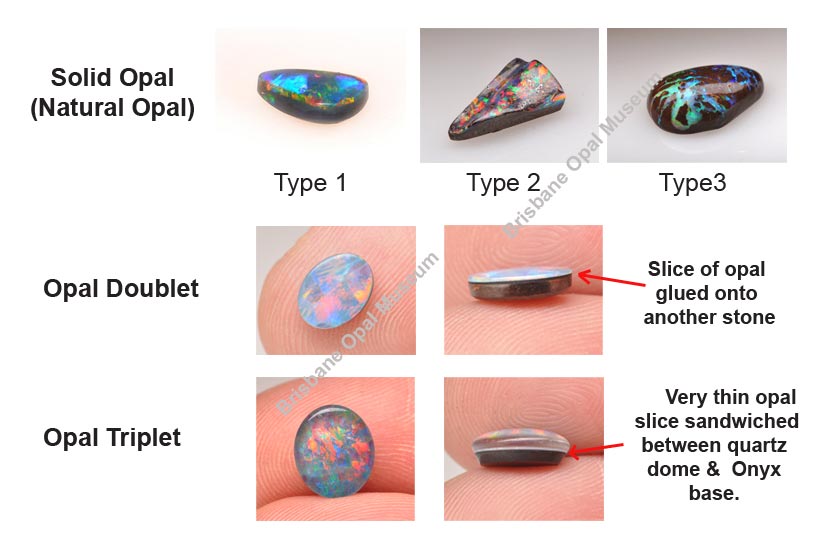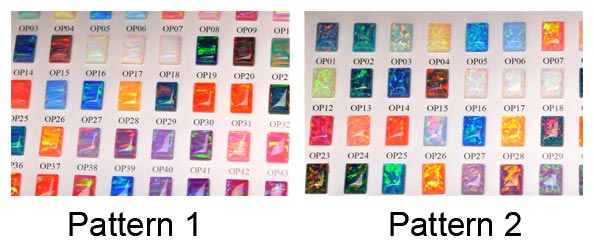Composite Opals & Synthetics
Exploring the Opal Doublets and Triplets

Opal doublets and triplets, also known as composite opal, contain pieces of natural opal, but are not "classic solid" stones. Instead, composite opals are a thin slice of precious opal that are glued to a dark backing in order to enhance the slice's play-of-colour and mimic the brightness of a black or boulder opal. The difference between doublets and triplets is that while doublets are set with the face of the opal slice left uncovered, triplets will firstly have a glass dome adhered onto the face of the opal slice. This is because the slice of opal in a triplet is thinner than in a doublet and therefore needs more protection.
How are composite Opals Set in Jewellery?
While composite opals work very well as costume jewellery, they are not in the same category of quality as solid opals. Because of this, we set doublets and triplets in silver rather than gold, which is typically only used as a setting for the best and brightest solid opals. Silver is a chic and timeless setting choice that, paired with a rub-over bezel, wraps around the glued seams of the opal and helps to protect it from damage.
How to Care for Composite Opal Jewellery
Composite opals are much more delicate than classic solid opals. They are not suitable for daily wear, which is why they are most appropriately classified as costume jewellery.
The number one rule of wearing composite opal jewellery is to never get it wet. Water will dissolve the glue and cause the layers of the composite opal to fall apart. For this reason, we recommend wearing composite opal earrings or pendants, not rings, since hands are constantly coming in contact with liquids.
So long as you wear composite opal jewellery sparingly, and remember to take it off before showering or sleeping, your piece should las a fairly long time. While I will always recommend investing in a classic solid Australian opal over a composite opal, we do have a small selection of doublet jewellery available in our souvenir shop. Visit us in store or contact us via telephone or email to shop our range of composite opal doublet jewellery.
Synthetic Opal
At the Brisbane Opal Museum and Jewellery Shop, we only sell 100% natural Australian opal. I never work with synthetics, however, I do think that it is important to be educated about them. While most businesses are honest about not trying to pass off synthetics as natural Australian opal, the internet is flooded with synthetics that are being advertised as natural opals. Luckily, it is relatively easy to differentiate between synthetic and natural opal. As you can see in the examples below, synthetic opal is made with unnatural colours like neon pink and purple, and features an almost completely uniform pattern called "ribboning". While the ribboning pattern is found is found in natural opal, it is extraordinarily rare. Additionally, no two opals look exactly alike, whereas there may be rows of of synthetics in a souvenir shop that appear identical.

When it comes down to it, I will say that there is nothing wrong with purchasing a synthetic opal, so long as the seller is up front with you about what you are buying. Every gemstone has a synthetic counterpart and there are certainly a market for these. We so have some synthetic opal specimens as a part of our "enhanced opal" display in the museum but you will never find any synthetics in our jewellery or souvenir shops.
Click here to shop 100% natural Australian opal jewellery.